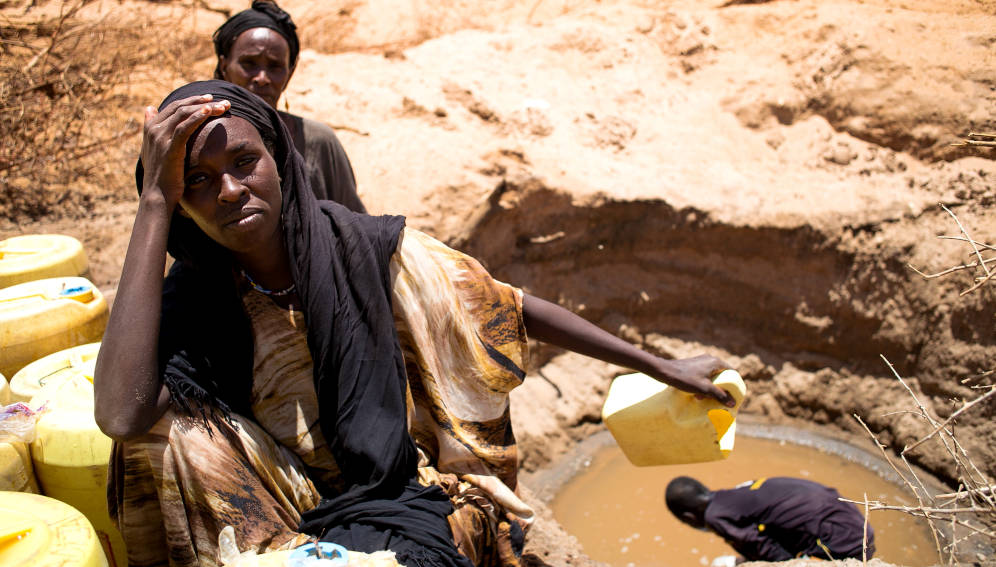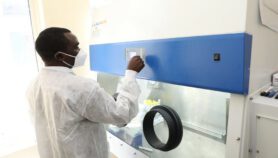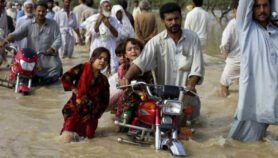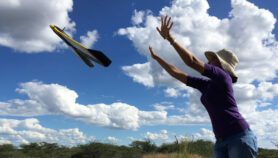08/03/24
Droughts increase HIV risk in rural Africa – study

By: Elna Schütz
Send to a friend
The details you provide on this page will not be used to send unsolicited email, and will not be sold to a 3rd party. See privacy policy.
[JOHANNESBURG] Climate change-driven droughts are increasing the risk of HIV infection among rural women in Sub-Saharan Africa by driving them into sex work, according to a five-country study.
Across the Africa region, the World Health Organization says there are around 25.6 million people living with HIV, while around 380,000 people died from AIDS related illness in 2022.
Researchers from the University of Bristol in the UK believe that droughts, and their impacts on food security and livelihoods, are pushing more people into transactional sex, increasing the risk of HIV transmission.
“We found that women in rural areas who had been exposed to drought were more likely to acquire HIV than those who had not been exposed to drought.”
Adam Trickey, research fellow, University of Bristol.
The researchers linked HIV prevalence data from more than 100,000 adults surveyed in Lesotho, Eswatini, Zambia, Tanzania, and Uganda between 2014 and 2016 with historical rainfall patterns.
They observed that women living in drought-stricken rural areas had a higher likelihood of contracting HIV compared to their counterparts in unaffected regions or urban settings, regardless of gender.
“We found that women in rural areas who had been exposed to drought were more likely to acquire HIV than those who had not been exposed to drought,” Adam Trickey, research fellow at the University of Bristol, told SciDev.Net.
He explained that this was not the case, however, for women in urban areas or men in either rural or urban areas.
The researchers say droughts, which have become more frequent and intense as a result of climate change, exacerbate existing vulnerabilities, particularly in rural communities heavily reliant on subsistence farming.
This translates to increased poverty and food insecurity, factors known to contribute to the spread of HIV, according to the study, published in the journal AIDS and Behavior and funded by Wellcome.
It says drought-induced hardship is often disproportionately borne by women, who may engage in transactional sex, particularly with older, richer men, to secure basic necessities.
The study also notes that droughts can exacerbate mental health issues and heighten gender-based violence, both of which are linked to risky sexual behaviours and can hinder access to vital HIV prevention and treatment services.
‘Perfect storm’
With approximately 15 per cent of land in Sub-Saharan Africa currently experiencing drought, and a high HIV prevalence, the researchers say their findings underscore the potential for a surge in HIV transmission if left unaddressed.
One in five adults on the continent have HIV and the majority of the population relies on subsistence farming, creating a perfect storm of factors, says Trickey.
He adds that even minor climate shifts, combined with Africa’s HIV burden and drought exposure, could dramatically impact HIV transmission.
“So, even if the changes are very slight, due to the large number of people with HIV living in Africa and the large percentage who will likely be affected by drought, this change could have a large effect on the number of people acquiring HIV,” Trickey tells Scidev.Net.
Trickey believes there is a need for governments to focus on funding and the rollout of antiretroviral therapy – a combination of medicines used to treat HIV.
“If efforts can be continued to get everybody with HIV in Sub-Saharan Africa onto stable antiretroviral therapy, then this could counteract any increases from risky sexual practices caused by climate change increasing poverty and food insecurity,“ he said.
Mark Lieber, HIV clinical fellow at the Los Angeles Department of Health and Human Services, says the study puts flesh on the bones of the assumed link between climate change and HIV.
However, he stressed that drought was “only one of the many environmental consequences of increased carbon emissions worldwide”.
Lieber believes impactful interventions need to come not only from reducing carbon emissions but also developing resilience, through multidisciplinary collaborations.
He told SciDev.Net: “Enhancing food security in the global South and empowering women are perhaps two of the best things we can do to protect the most vulnerable from the negative health impacts of climate change.”
This piece was produced by SciDev.Net’s Sub-Saharan Africa English desk.













